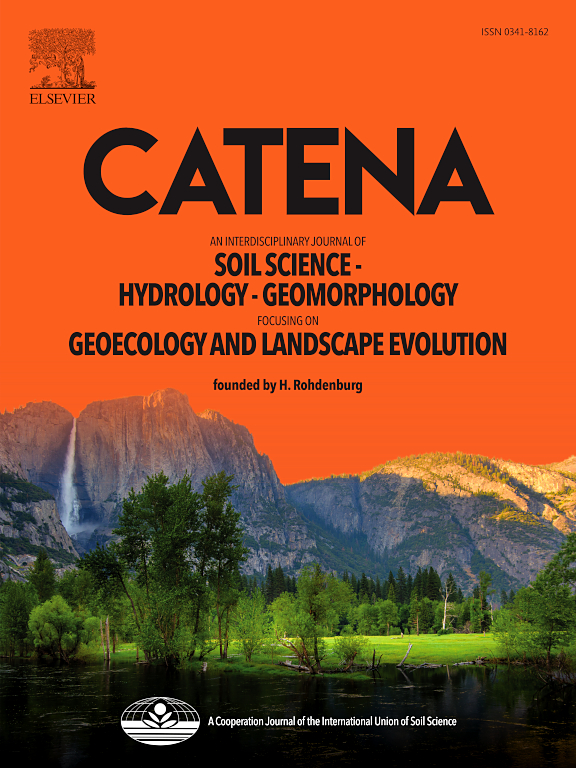Maize/cover crop intercropping mitigates soil erosion and enhances yield of ridge cultivation in Chinese Mollisol region
IF 5.4
1区 农林科学
Q1 GEOSCIENCES, MULTIDISCIPLINARY
引用次数: 0
Abstract
Severe soil erosion has led to large-scale sloping farmland degradation and destruction in the Mollisol of Northeast China. Intercropping cover crops with the main crop is a potential agroecological practice to reduce soil erosion in the current intensive cropping systems, if the grain yield of the main crop is not compromised. In this study, we intercropped six cover crops (calopo, pigeon pea, Chinese milk vetch, oilseed rape, oilseed radish and woad) with contrasting functional traits in the furrow of maize ridge cropping system to evaluate their effects on maize grain yield and soil erosion. The field experiment was conducted in 2022 and 2023 on a 4.2° slope farmland in the Mollisol region of Northeast China. The results showed that the effects of cover crop intercropping on maize grain yield and soil erosion control varied with cover crop species and their phenological and morphological characteristics. Cover crops, which emerged late and had relatively low plant height and aboveground biomass in the early growth stages of maize, had no significant effect on maize growth. In terms of soil erosion control, cover crops with higher stem density and stem diameter density provided more effective soil erosion control. Based on agronomic and environmental evaluations, Chinese milk vetch and woad are the most suitable cover crops for maize/cover crop intercropping systems, which increased maize yield by 0.6–13.5% and reduced annual soil loss by 80.6–88.3%. These results justify that intercropping suitable cover crops with maize is an effective soil erosion control strategy that ensures high yield production without changes in existing mechanized farming practices on sloping farmland in the Mollisol region of Northeast China.

求助全文
约1分钟内获得全文
求助全文
来源期刊

Catena
环境科学-地球科学综合
CiteScore
10.50
自引率
9.70%
发文量
816
审稿时长
54 days
期刊介绍:
Catena publishes papers describing original field and laboratory investigations and reviews on geoecology and landscape evolution with emphasis on interdisciplinary aspects of soil science, hydrology and geomorphology. It aims to disseminate new knowledge and foster better understanding of the physical environment, of evolutionary sequences that have resulted in past and current landscapes, and of the natural processes that are likely to determine the fate of our terrestrial environment.
Papers within any one of the above topics are welcome provided they are of sufficiently wide interest and relevance.
 求助内容:
求助内容: 应助结果提醒方式:
应助结果提醒方式:


